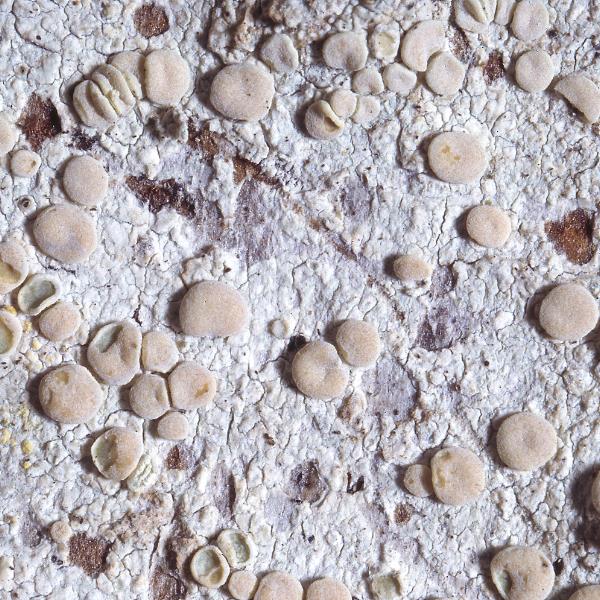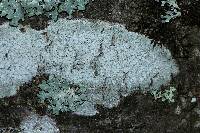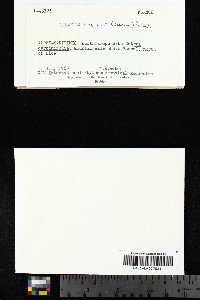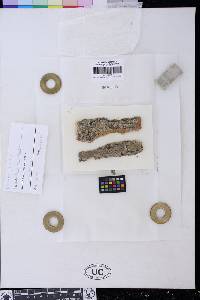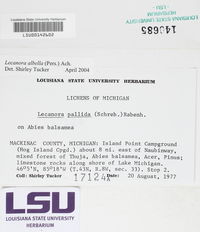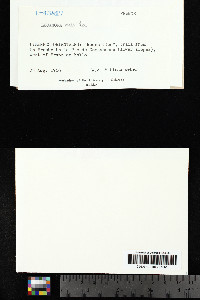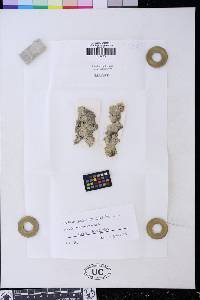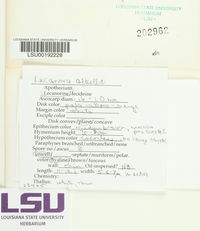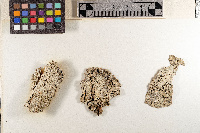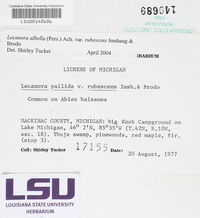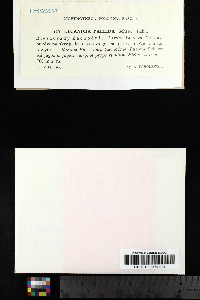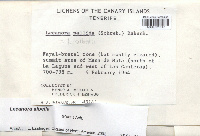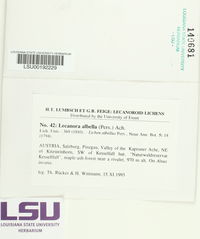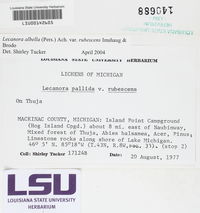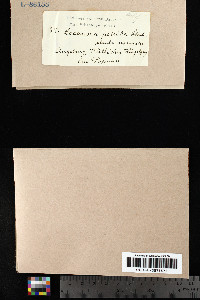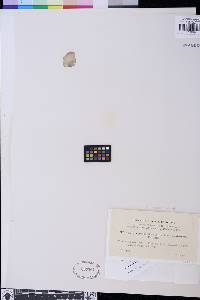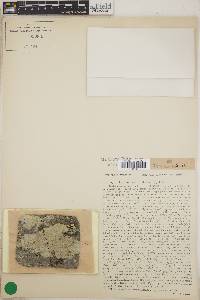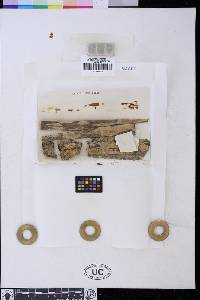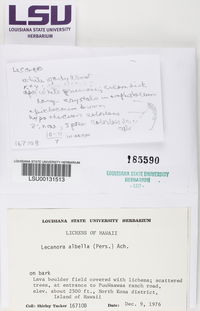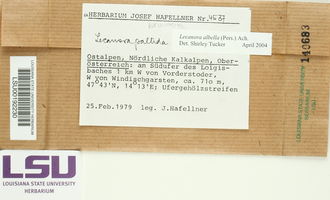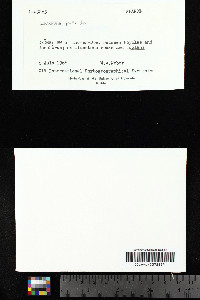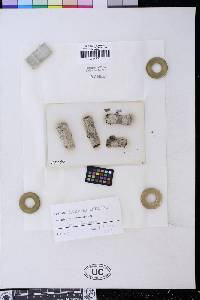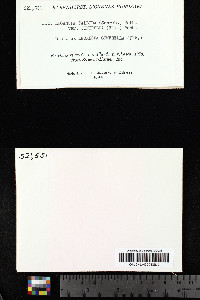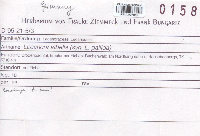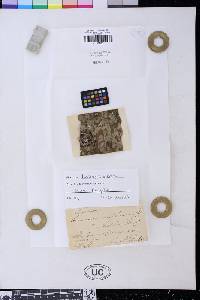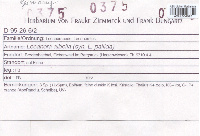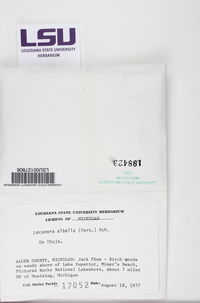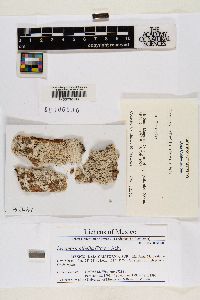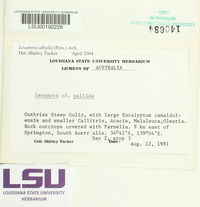
Consortium of Lichen Herbaria
- building a Global Consortium of Bryophytes and Lichens as keystones of cryptobiotic communities -
- Home
- Search
- Images
- Species Checklists
- US States: O-Z >
- US National Parks
- Central America
- South America
- US National Parks
- Southern Subpolar Region
|
|
|
|
Family: Lecanoraceae
[Lecanora albella f. albella (Pers.) Ach., moreLecanora albella subsp. albella (Pers.) Ach., Lecanora albella var. albella (Pers.) Ach., Lecanora albella var. rubescens (Imshaug & Brodo) Lumbsch, Lecanora pallida var. rubescens Imshaug & Brodo, Lecanora subalbella Nyl., Lecanora subfusca f. albella (Pers.) Leight., Lichen albellus Pers., Lichen pallidus Schreb., Parmelia albella (Pers.) Ach., Parmelia pallida var. albella (Pers.) Schaer., Psora albella (Pers.) Hampe, Rinodina albella (Pers.) Gray, Verrucaria albella (Pers.) Hoffm.] |
Nash, T.H., Ryan, B.D., Gries, C., Bungartz, F., (eds.) 2004. Lichen Flora of the Greater Sonoran Desert Region. Vol 2. Thallus: crustose, continuous or rimose-areolate; prothallus: white areoles: flat, thin, opaque, ecorticate surface: yellowish white to yellowish gray or whitish gray to gray or pale green to greenish white, smooth, epruinose, with an indistinct margin, esorediate Apothecia: sessile, 0.3-1.5 mm in diam., lecanorine disc: yellowish brown or pale pink to carneous, plane or convex, heavily whitish gray pruinose margin: concolorous with thallus, thin or thick, persistent, even or prominent, entire or flexuose, smooth, entire, without a parathecial ring amphithecium: present, hyaline to pale yellow, with numerous algal cells, with numerous small crystals that dissolve in K, corticate or not; cortex: absent or indistinct, basally not thickened, interspersed, hyaline to pale yellow, (65-)70-100(-120) µm thick laterally, (80-)100-110(-130) µm thick basally parathecium: hyaline, lacking crystals epihymenium: brown to dark brown, with pigment dissolving in K, with crystals dissolving in K hymenium: hyaline, clear; paraphyses: slightly thickened (up to 2.5 µm wide) apically, not pigmented; subhymenium: hyaline, 15-20 µm thick; hypothecium: hyaline, without oil droplets asci: clavate, 8-spored ascospores: hyaline, simple, ellipsoid or broadly ellipsoid, (8.5-)11.5-13.5(-14) x (5-)7-8.5(-9) µm; wall: less than 1 µm thick Pycnidia: not observed Spot tests: K+ yellow or + yellow turning red, C-, KC-, P+ orange to red Secondary metabolites: atranorin (major), chloroatranorin (minor), connorstictic acid (minor or absent), conprotocetraric acid (minor), consalazinic acid (minor or absent), constictic acid (minor or absent), norstictic acid (major or absent), protocetraric acid (major), salazinic acid (major or absent), stictic acid (major), virensic acid (major, minor or absent). Substrate and ecology: on the bark of deciduous trees and conifers World distribution: widespread in temperate to boreal regions of the Holarctic, including Africa, Asia, Europe, and North America Sonoran distribution: Arizona, Chihuahua, and southern California, rare at elevations above 1500 m. Notes: Lecanora albella is readily distinguished by its heavily pruinose apothecial disc, relatively small apothecia with thin margins, and the presence of protocetraric acid. Other corticolous species with heavily pruinose disc in the area are L. caesiorubella and L. casuarinophila. The latter species differs in having a leprose thallus and lacking depsidones. L. caesiorubella is very similar to L. albella and the separation of the two species may become difficult in some cases. Chemically, the two species are indistinguishable, but L. caesiorubella generally has larger apothecia and a thicker pseudocortex. |
|
|
|
Powered by Symbiota

